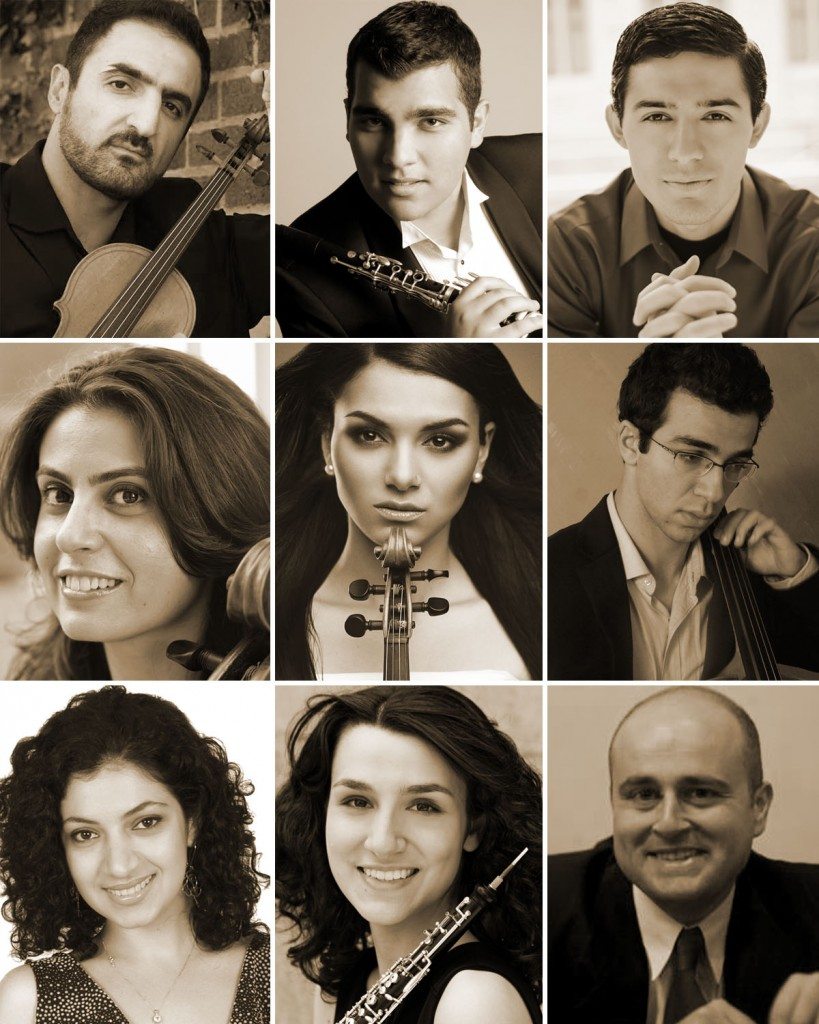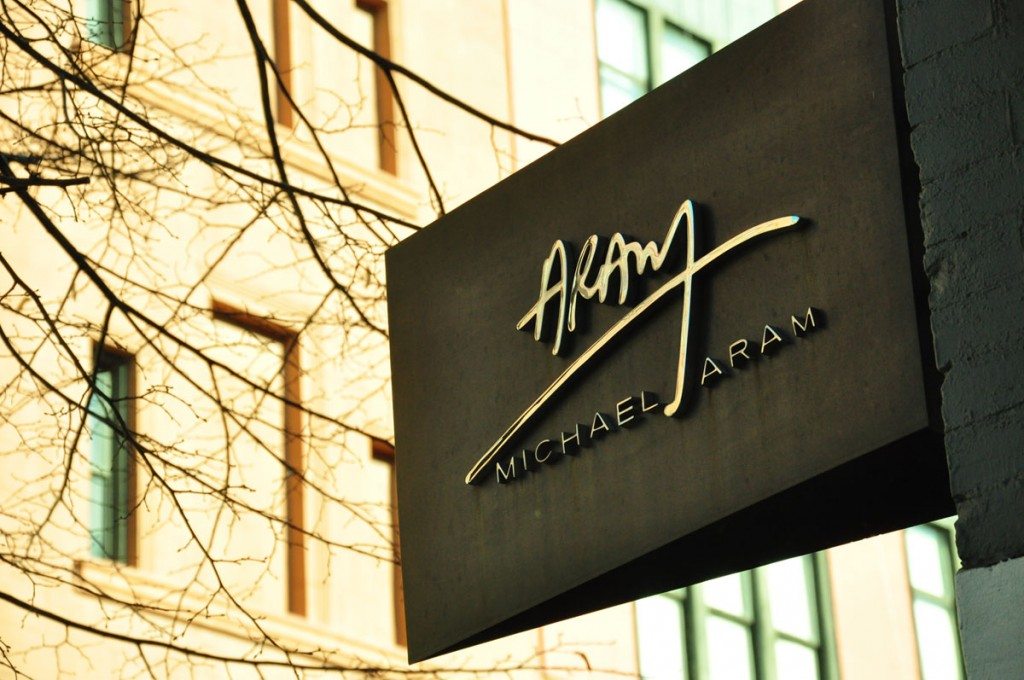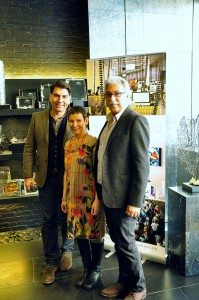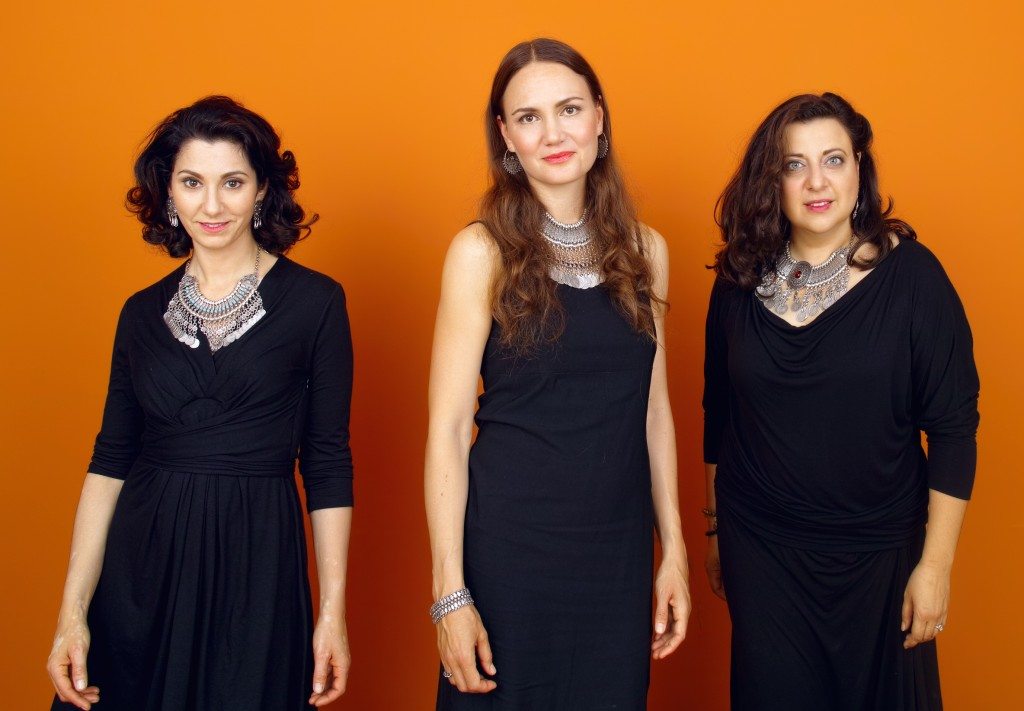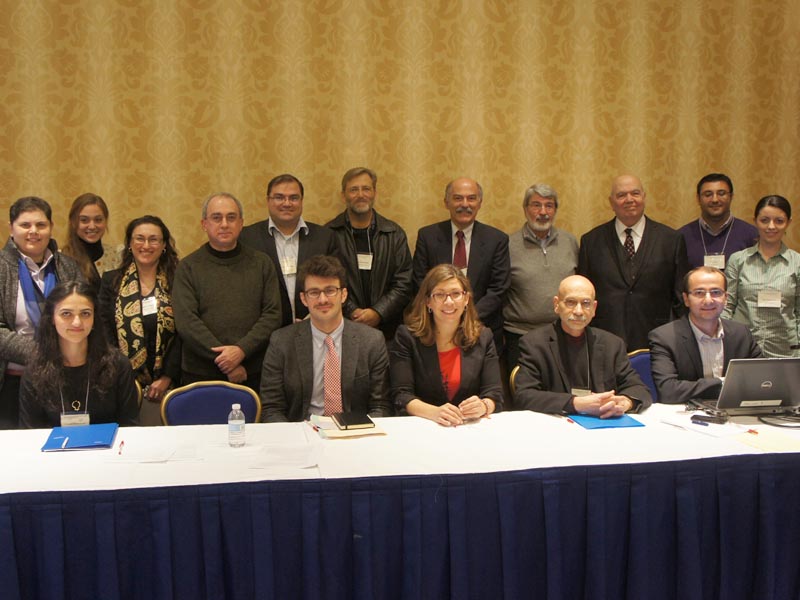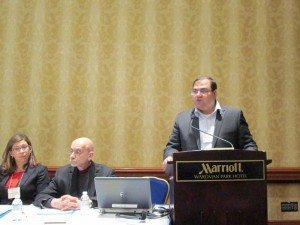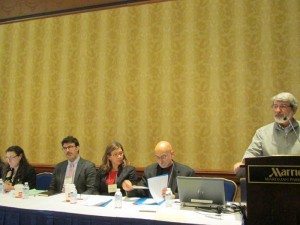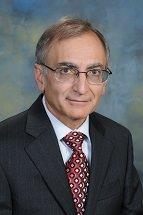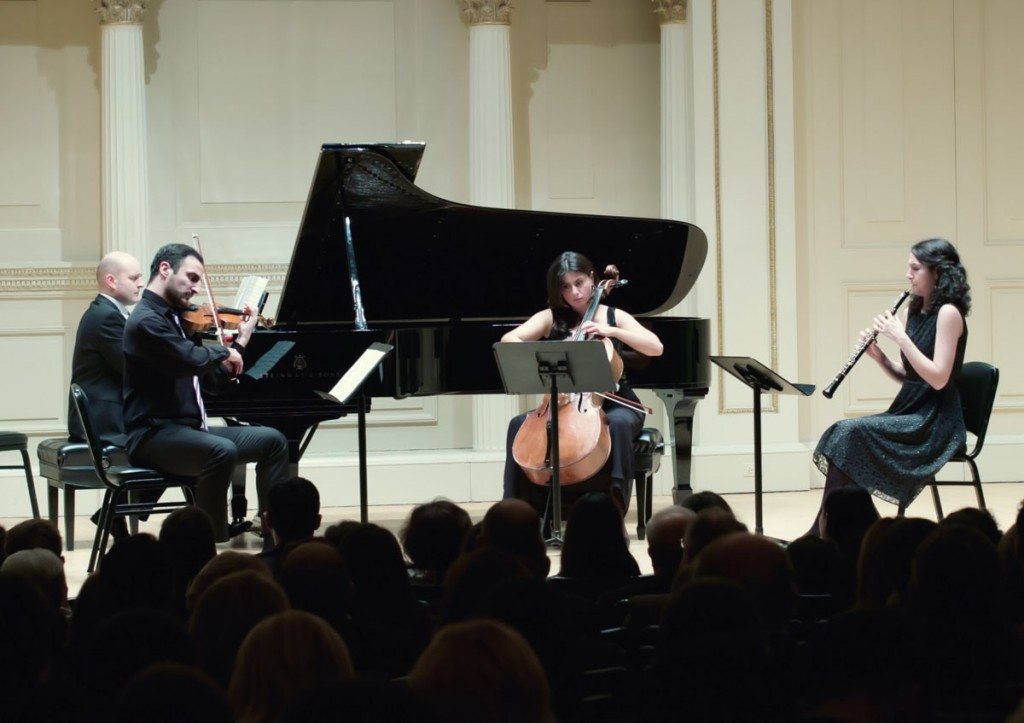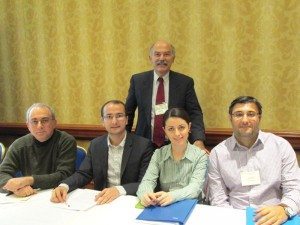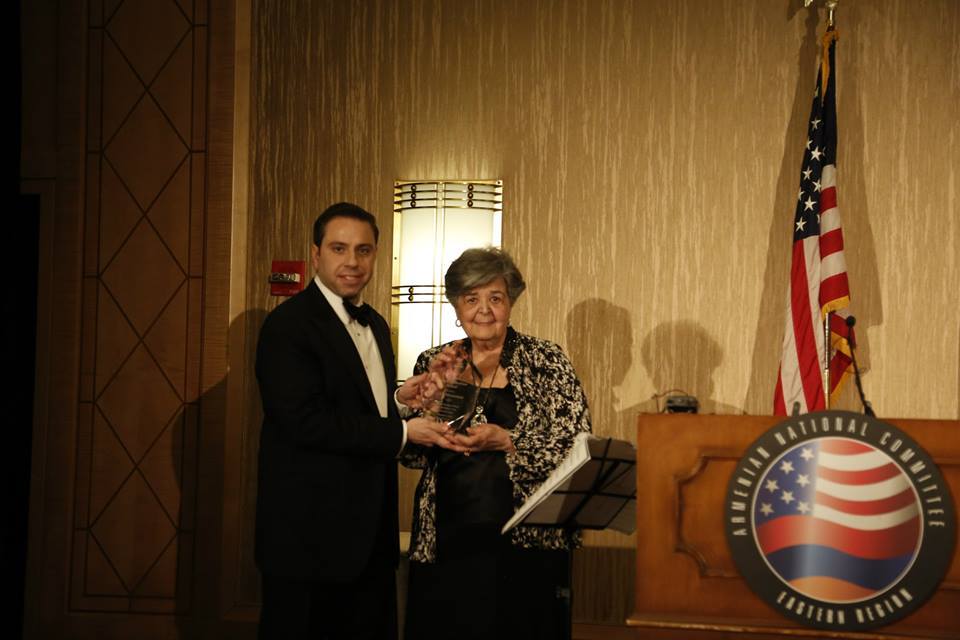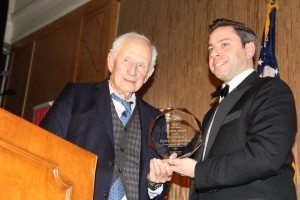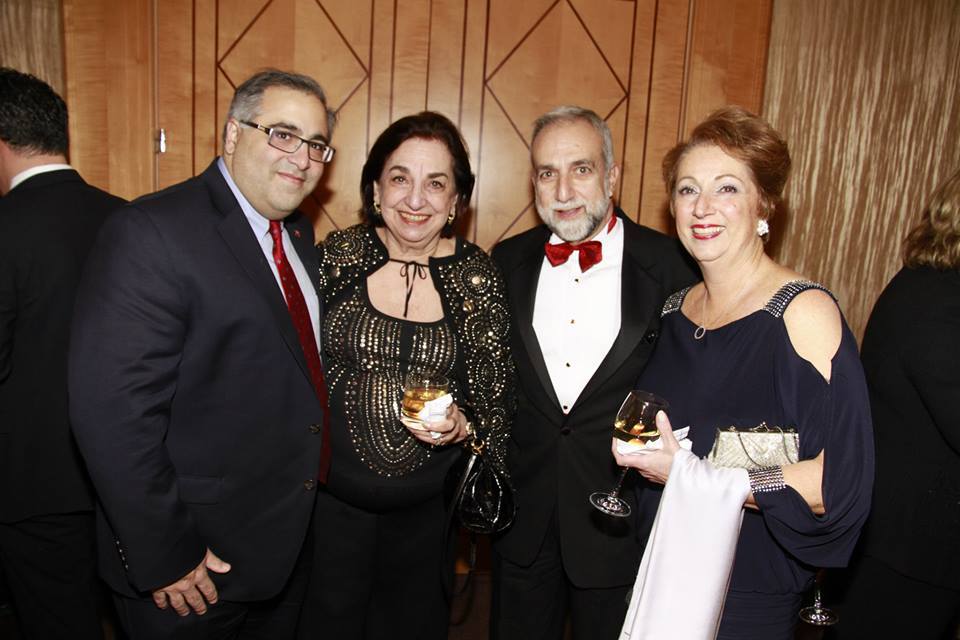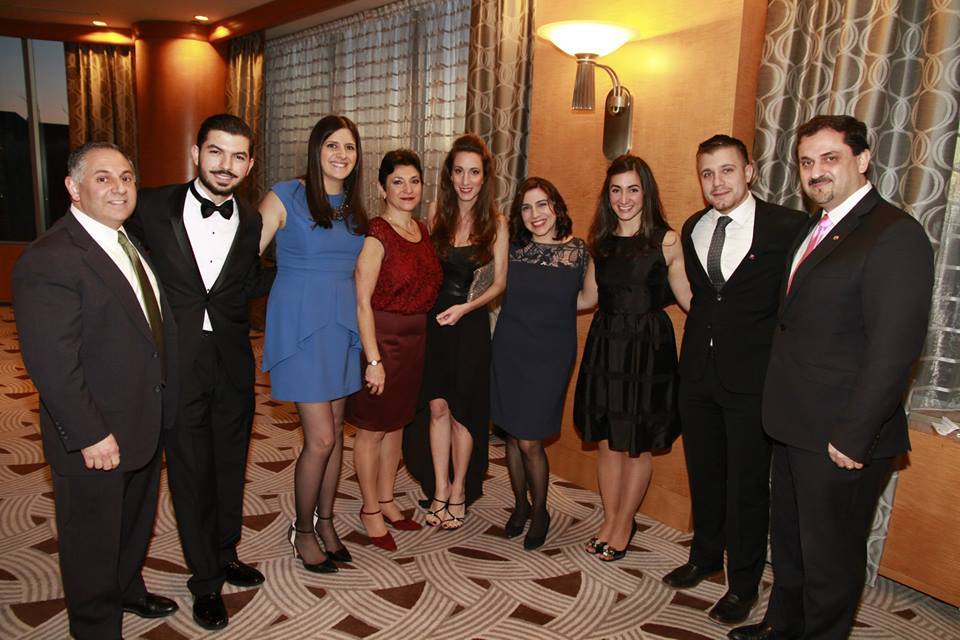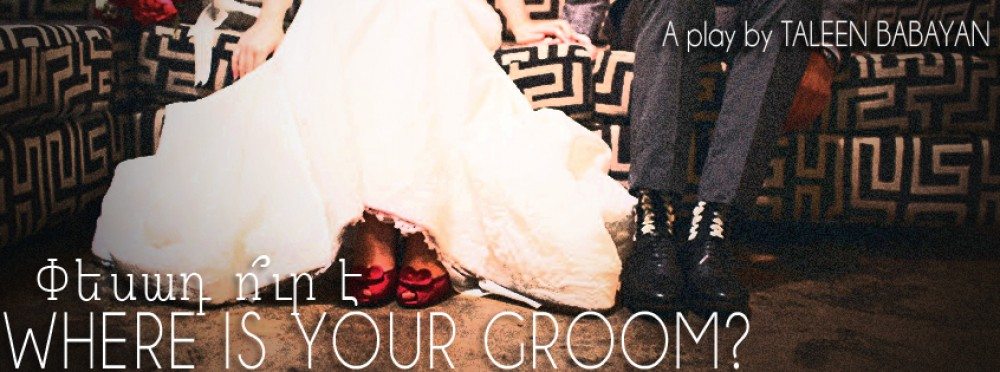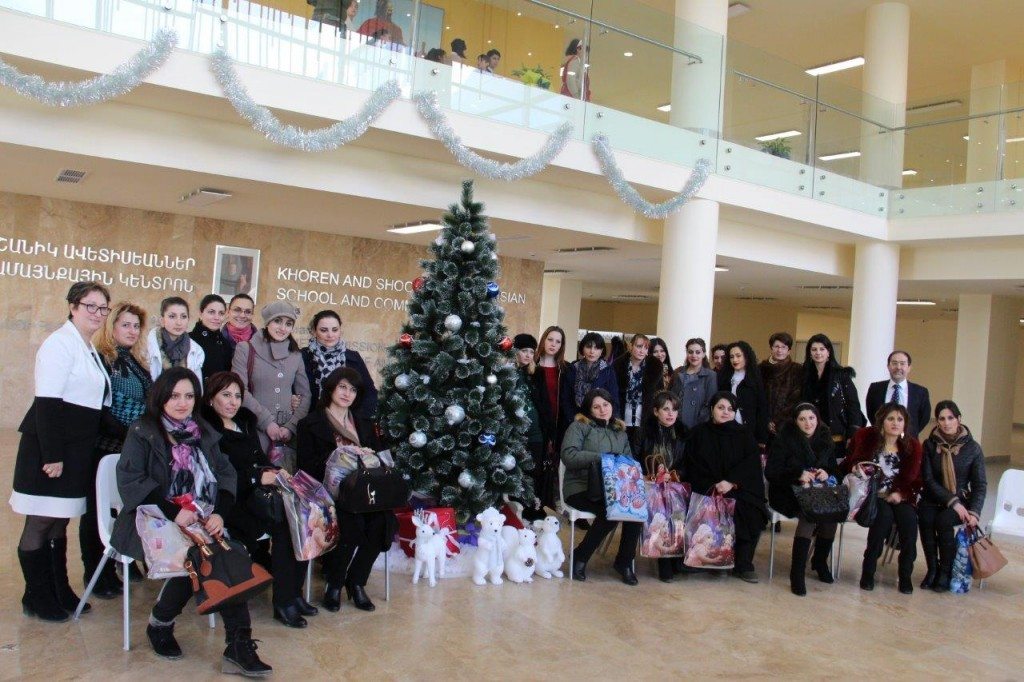By Aram Arkun
Special for the Society of Armenian Studies
The Society for Armenian Studies (SAS), a primarily American association of scholars and supporters of Armenology, is celebrating its 40th anniversary this year. It held an international conference in Yerevan in October, and on Nov. 21-22, it convened a conference in Washington, D.C. called, “Armenians in the Ottoman Empire in the 19th-20th Centuries.”
Dr. Kevork B. Bardakjian, president of the SAS Executive Council and Marie Manoogian Professor of Armenian Language and Literature at the University of Michigan, Ann Arbor, welcomed participants and guests. The chairman of the conference organizing committee, Dr. Bedross Der Matossian, Assistant Professor of Modern Middle East History in the Department of History at the University of Nebraska, Lincoln, spoke of the attempt to organize three panels, on the following topics: the contribution of Armenians to Ottoman culture, society, art, and architecture; Armenians of the empire from the Balkan Wars to World War I; and the Armenian Genocide and its aftermath. Unfortunately, no submissions were received on the second topic, but speakers for one panel on the first range of topics, and two on the last, were found.
![Participants in the SAS Conference in Washington, D.C.]()
Participants in the SAS Conference in Washington, D.C.
In fact, Der Matossian felt the first panel “should be seen as a microcosm of what type of research needs to be done in order to bring back the Armenians into Ottoman history and reconstruct their history.” The focus on the Armenian Genocide for the other two panels, he said, was fitting due to the approaching Centennial of the start of that event. Der Matossian also stated that “From the academic perspective, a lot of work needs to be done in understanding the complexities of the Armenian Genocide beyond the clichés of Muslims vs. Christians or Turks vs. Armenians.” He concluded that Armenian Genocide studies can go beyond the analysis of a specific event to provide “new empirical data and thematic approaches to understand mass violence in general.”
Der Matossian thanked Prof. Barlow Der Mugrdechian, Berberian Endowed Coordinator of the Armenian Studies Program at California State University, Fresno, for help in organizing the conference and SAS Secretary Ani Kasparian, of the University of Michigan, Dearborn, for preparing registration materials.
The first panel, on Armenian contributions to Ottoman culture, was chaired by Dr. Levon Avdoyan, the Armenian and Georgian Area Specialist at the Library of Congress. Before introducing the speakers, he stated that “as someone who was at the 1976 conference, it is really spectacular that we are at the 40th year of this organization.”
The first speaker on this panel, Murat C. Yildiz, a doctoral student in the Department of History at the University of California, Los Angeles (UCLA), spoke on “Reassessing Cultural Transformation in Early 20th-Century Bolis: Armenian Contributions to a Shared Ottoman Physical Culture.” This topic was related to his dissertation, entitled “Strengthening Male Bodies and Building Robust Communities: Physical Culture in the Late Ottoman Empire.”
Yildiz depicted Armenian programs to develop exercise and sports as part of a broader shared physical culture in the Ottoman Empire from the mid- to late-19th century. Athletics were associated with modernity, and were thought important for building physical and mental health, discipline, and strength. In Istanbul the Imperial School and Robert College disseminated such ideas, but Armenians wanted to form their own autonomous sports clubs. These clubs shared a developing middle class identity with other Ottomans, but had a distinct ethnoreligious nature. Mistrusted by the regime of Sultan Abdul Hamid II, the clubs mushroomed in number with the liberties of the Young Turk era after 1908.
Armenians looked to their pagan past in naming some of these clubs, such as the Kurucheshme Ardavazt Athletic Club or the Armenian Dork club. They published their own sports magazines, like “Marmnamarz” (established in 1911 by Shavarsh Krisian), which was part of a multilingual Ottoman sports press.
Yildiz’s study can be considered part of a new movement to examine social, cultural, and political transformations in the Ottoman Empire through linguistically diverse sources. He demonstrated that shared Ottoman civic values did not prevent exclusive ethnoreligious ties.
![Conference organizer Dr. Bedross Der Matossian (right)]()
Conference organizer Dr. Bedross Der Matossian (right)
Yildiz was followed by Nora Cherishian Lessersohn, a master’s student at the Center for Middle Eastern Studies at Harvard University, who graduated from Harvard College in 2009 and has worked at the Metropolitan Museum of Art and at the Manhattan District Attorney’s Office. Her talk was entitled, “‘Provincial Cosmopolitanism’ in Late Ottoman Anatolia: An Armenian Shoemaker’s Memoir.” Her goal is to add the Ottoman-Armenian voice as a full partner in the conversation on Ottoman provincial history.
She explored her great-grandfather Hovhannes Cherishian’s memoirs. Born in Marash in 1886, he was a shoemaker who served in the Ottoman army from 1910-14 in Adana and Mersin. He experienced great suffering and loss due to the Armenian Genocide, and its aftermath. He was deported to Syria, and returned after the war to Marash, yet lost his young bride and brother during the retreat from this city in 1920. Nonetheless, he also enjoyed good relations with various Muslims.
Lessersohn read two excerpts from the memoirs. She called the close relationship between Muslims and Christians provincial cosmopolitanism, which resulted from living in an urban, demographically complex but provincial environment, something different from the interactions in major port cities.
The next speaker was Anahit Kartashyan, a doctoral student working on the Armenian community of Constantinople in the 19th century at the Department of Asian and African Studies at Saint Petersburg State University. With a bachelor’s degree in Turkish studies (2008) and a master’s degree in Ottoman studies (2010), both from Yerevan State University (2008), Kartashyan taught modern Turkish from 2010-11 at her alma mater before continuing her graduate studies in Russia. Her talk was titled, “The Discourse of First-Wave Ottomanism among the Armenian Intellectuals and Statesmen in the Ottoman Empire,” and is part of her dissertation work. She has studied a number of contemporary Armenian newspapers, the records of the Armenian National Assembly, and various other Armenian publications.
Ottomanism during its first stage, from the 1830’s to the 1860’s, was an ideological justification for strengthening the state. A special role was attributed to the middle class. For the Ottoman Armenians, reforms were primarily cultural rather than political, though in fact they could not be implemented without political change.
Young Armenians saw Ottomanism as an opportunity to reorganize education, culture, and the Armenian millet, or ethnoreligious community structure, and believed it could help in their struggle with Armenian conservatives. They could get state support and privileges if they respected the sultan and the laws of the Ottoman Empire. However, the gap between Muslims and non-Muslims grew when reforms were not implemented, so that excitement about Ottomanism disappeared. Over the next two decades, Armenians realized that equal rights were not sufficient—they also needed access to the state bureaucracy.
The final presenter in the first panel was Dr. Heghnar Zeitlian Watenpaugh, Associate Professor of Art History at the University of California, Davis, and co-chair of the Department of Art and Art History. Her book, The Image of an Ottoman City: Imperial Architecture and Urban Experience in Aleppo in the Sixteenth and Seventeenth Centuries (2004), received the Spiro Kostof Book Award from the Society of Architectural Historians. Her next book on Mass Violence and Cultural Heritage in the Modern Middle East is forthcoming from Stanford University Press. Her paper was called, “Reconstructing the Urban and Architectural History of Ottoman Armenian Communities: Zeytun, 1850-1915.”
Watenpaugh became interested in Zeytun as a result of the Zeytun Gospels, located now at Yerevan’s Mesrop Mashtots Institute of Ancient Manuscripts, except for eight pages at the Getty Museum in Los Angeles. The Western Prelacy of the Armenian Apostolic Church of America’s lawsuit to take the eight pages away from the Getty called a great deal of attention to this manuscript illuminated by Toros Roslin.
Zeytun’s architecture, religious life, and local history provide the last context for the manuscript before it was taken away. Watenpaugh pointed out how Zeytun was usually studied from the point of view of political history due to its unusual position of local autonomy through most of the Ottoman period. She reviewed the extant sources and provided images of Zeytun’s landscape, architecture, and population.
Watenpaugh concluded that as Raphael Lemkin had written, the destruction of things like architecture, relics, agricultural methods, and natural sacred phenomena are examples of the eradication of culture as a part of the genocidal process. In this way, the Armenian layer of life in cities and villages in Turkey today has been largely silenced or ignored. Nonetheless, no art or urban history of the late Ottoman Empire is complete without addressing the history of Zeytun or other Armenian settlements.
![(L-R) Dr. Hegnar Watenpaugh, Murat Yildiz, Dr. Rachel Goshgarian, and SAS President Dr. Kevork Bardakjian at the opening session of the SAS Conference.]()
(L-R) Dr. Hegnar Watenpaugh, Murat Yildiz, Dr. Rachel Goshgarian, and SAS President Dr. Kevork Bardakjian at the opening session of the SAS Conference.
Dr. Rachel Goshgarian, Assistant Professor of History at Lafayette College, with a Ph.D. in Middle Eastern studies from Harvard University, served as discussant for the first panel. Formerly director of the Krikor and Clara Zohrab Information Center of the Diocese of the Armenian Church of America (Eastern), she is completing a book manuscript entitled, A Futuwwa for the Borderlands; Homosociality, Urban Self Governments and Interfaith Interactions in Late Medieval Anatolia. Goshgarian was excited to see such a wide range of papers excavating what Armenian life looked like in the Ottoman Empire, and asked a number of questions of the speakers.
Session II began with Barlow Der Mugrdechian, chair, introducing the speakers. First was Asya Darbinyan, a graduate student at Clark University’s Strassler Center for Holocaust and Genocide Studies with Professor Taner Akcam, who received her bachelor’s and master’s degrees in international relations from Yerevan State University. Her master’s thesis concerned American humanitarian assistance and Near East Relief efforts for the Armenians during and after the genocide. She worked at the Armenian Genocide and Museum Research Institute as deputy director. Her presentation for the panel was entitled, “The Armenian Genocide and Russian Response.”
Darbinyan explored relief efforts on the Caucasus front during World War I, including the rapid official response of the government of the Russian Empire to the suffering of the Armenians. Aside from political actions and declarations, regulations were issued defining refugees, which created complexities in determining who was eligible for aid, medical assistance, and official refugee identity cards.
A number of organizations provided aid under dire circumstances. According to N. Kishkin, in August 1915 the total number of refugees was 150,000. There was a huge daily death toll.
The Tatianinsky Committee, named after the Grand Duchess Tatiana Nikolaevna, was established in September 1914, and collected donations of money, clothing, and food from companies, individuals, churches, mosques, educational institutions, and other organizations. The All Russian Union of Cities had a Caucasus Department (or Committee), the All Russian Union of Zemstovs, the Russian Red Cross, and various other local and national Russian organizations provided humanitarian aid. When Russian troops advanced and some Armenian refugees were able to return to their homes, aid was still sent to them by the same committees.
The second speaker was Aintab native Umit Kurt. With a bachelor’s degree from Middle East Technical University in political science and public administration and a master’s degree from Sabanci University from the Department of European Studies, Kurt at present is a doctoral candidate at Clark University’s Department of History and an instructor at Sabanci. He is the author of The Great and Hopeless Race of Turks: The Origins of Turkish Nationalism in 1911-1916 (in Turkish 2012; in English forthcoming from I.B. Tauris), and with Taner Akcam, Kanunlarin Ruhu, which will come out in English as the Spirit of the Laws: The Plunder of Wealth in the Armenian Genocide in 2015. His talk was called, “The Emergence of the New Wealthy Class between 1915-1911: The Seizure of Armenian Property by the local Elites in Aintab.”
Kurt presented the legal framework created for the confiscation of Armenian properties by the Committee of Union and Progress (CUP), which was also linked to various local forms of Armenian hatred. This framework was necessary to legitimatize the largely state process of theft and seizure. In Aintab, the careful preparation and rapid seizure was striking. Local notables became a new wealthy strata through this confiscation.
Kurt used a number of Armenian sources, like the Aram Andonian archives, the Sarkis Balabanian diaries, and Avedis Sarafian’s history of the Aintab Armenians, to depict the deportation process in Aintab, while also consulting German, Ottoman, and other archival documents.
He showed Aintab to be a microcosm of the unfolding policies of the Young Turks. The wide range of actors indicated how central and coordinated the deportation of Armenians and confiscation of their properties was, while the direct and active involvement of provincial Muslim elites was motivated by the desire to enjoy Armenian wealth and properties.
The final speaker of the panel was Khatchig Mouradian, a doctoral candidate in genocide studies at Clark University who teaches at Rutgers as the coordinator of the Armenian Genocide Program. He is a former editor of the Armenian Weekly (2007-14). His talk was entitled, “The Meskene Concentration Camp, 1915-1917: A Case Study of Power, Collaboration, and Humanitarian Resistance during the Armenian Genocide.”
As sources, Mouradian primarily used the Aram Andonian archives from the AGBU Nubarian Library in Paris, the reports and minutes of the Armenian Prelacy in Aleppo and its council for deportees, and the accounts, diaries, and memoirs of deportees.
Tens of thousands of Armenians arrived in Meskene between May 1915 and winter 1917, of which many died of diseases and violence. Though intended as a transit camp, Meskene morphed into a concentration camp where many spent months. Mouradian focused on daily life in the camps. Many of the guards were Armenians, who were particularly brutal to prove themselves to the Ottomans. Armenians tried to volunteer for building works in order to escape further deportation and death in Der Zor further down the river. Food and aid were minimal, so most of the camp residents were usually starving. Armenian women tried to help orphans in the camp at great personal cost.
Camp director Huseyin Avni was venal but not murderous and brutal. It was his replacement, Kor Huseyin, who nearly completely emptied the camp. By the end of 1916, 28,834 Armenians had been redeported to other camps, and 80,000 had died at Meskene.
Dr. Rouben Paul Adalian served as discussant for the second panel. With a UCLA history doctorate, he serves as director of the Washington-based Armenian National Institute, and is the author of Humanism from Rationalism: Armenian Scholarship in the Nineteenth Century (1992) and the Historical Dictionary of Armenia (2010). Adalian found that all three of the speakers from Clark University provided new contributions to the understanding of the Armenian Genocide, with great detail. He directed questions to all of the speakers, and afterwards a lively discussion ensued with audience members.
The post Society for Armenian Studies DC Conference on ‘Armenians in the Ottoman Empire’ (Part I) appeared first on Armenian Weekly.





